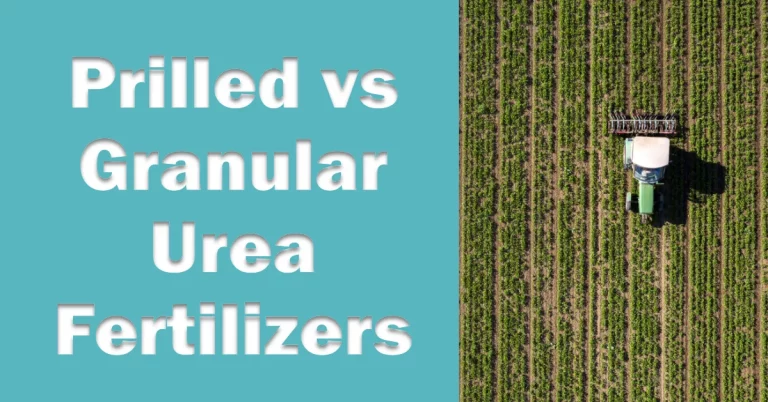Difference Between Cloud Point and Pour Point
Cloud point and pour point are two important measurements use to characterize the low temperature flow properties of petroleum products like fuels and lubricants. Understanding the difference between cloud point and pour point is critical for ensuring optimal performance of these products, especially in cold weather conditions.
This article will explain how they are measured, discuss factors that affect them, and outline their implications for fuels and lubricants. The goal is to provide a clear understanding of these two key petroleum testing points and how they differ.
Here is a comparison table of cloud point and pour point:
| Feature | Cloud Point | Pour Point |
|---|---|---|
| Definition | The temperature at which wax crystals first appear in a liquid fuel | The temperature below which a liquid fuel loses its flow characteristics |
| Measurement | The cloud point is measured by cooling a sample of fuel under controlled conditions and observing the temperature at which a cloud of wax crystals first appears. | The pour point is measured by cooling a sample of fuel under controlled conditions and observing the temperature at which the fuel ceases to flow. |
| Factors that affect | The cloud point is affected by the type of fuel, the length of the hydrocarbon chains in the fuel, and the temperature. | The pour point is affected by the same factors as cloud point, as well as the amount of wax in the fuel. |
| Implications | The cloud point is an important factor for fuels that are used in cold weather, as it can indicate that the fuel will not flow properly. | The pour point is an even more important factor for fuels that are used in cold weather, as it can indicate that the fuel will not flow at all. |
Read also Difference Between Gooch Crucible and Sintered Glass Crucible
What is Cloud Point?

Cloud point refers to the temperature at which a cloudiness or haze first appears in a liquid fuel or lubricant when it is cooled under standard test conditions. It indicates the initial formation of wax crystals in the fuel or oil.
Specifically, It is the temperature at which a sufficient amount of wax comes out of solution and forms a cloudy appearance in the fluid. This cloudiness occurs because as the temperature decreases, the wax begins to crystallize and solidify out of the fuel. This condition is bad for engines because when wax hardens, it thickens the fuel and blocks the fuel filters and injectors.
Cloud point is measured by gradually cooling a sample of the fuel or oil in a specialized cloud point tester under controlled conditions. The sample is examin visually during cooling to detect the first sign of cloudiness. The temperature at which this cloud is first observed is reported as the cloud point.
Several factors can influence:
- Chemical composition of the petroleum product
- Presence of wax-modifying additives
- Cooling rate during testing
- Amount of lighter fractions versus heavier fractions
The cloud point measurement provides important information about a fuel’s ability to flow at low temperatures. As the temperature drops near the cloud point, the wax crystals can begin to clog filters, restricting fuel flow. fuels with higher cloud points thus have poorer cold flow performance. read more at Wikipedia
What is Pour Point?

Pour point refers to the lowest temperature at which movement of the fluid is observed when it is cooled under prescribed conditions. It is the temperature below which the fuel or oil essentially stops flowing and becomes a “frozen” gel-like solid. Typically, in crude oil, a high pour point can be observe with a high paraffin content.
Pour point indicates the final solidification point of the wax in the petroleum product after it has fully crystallized out of solution. It is determined by gradually cooling a sample in a pour point tester until it no longer flows when the container is tilted. The lowest temperature before complete stoppage of flow is recorded as the pour point.
Factors like wax content, additives, and cooling rate affect the pour point, similar to cloud point. However, It generally occurs at a lower temperature than cloud point for a given petroleum fluid.
The pour point temperature has implications for transportation, storage, and use of fuels and lubricants, especially in cold regions. If the ambient temperature drops below the pour point, the product will essentially transform into a solid mass, unable to flow or be pump. Thus, pour point sets the lower limit for pumping and transporting these materials. read more
Read also What is difference Between Incineration and Pyrolysis in Waste Management
Difference Between Cloud Point and Pour Point
Both measured how temperature affects wax formation in petroleum products, there are key differences between the two:
- Cloud point indicates the onset of wax crystallization and haze formation, while pour point shows complete wax solidification and stoppage of flow.
- Cloud point occurs at a higher temperature than pour point for the same fluid.
- Cloud point signals the start of restricted fuel flows, whereas pour point means complete stoppage of flow.
- Cloud point testing shows initial wax appearance, while pour point shows fully developed crystallized wax structure.
- Cloud point is more relevant for predicting filtering issues, while pour point predicts pumping/transport challenges.
So in summary, cloud point refers to the initial stage of wax precipitation when haze first forms, while pour point indicates the final solidification phase. Cloud point problems will arise before pour point problems for a cooling petroleum product.
FAQs cloud point vs pour point
Standard test procedures include ASTM D2500 for cloud point and ASTM D97 for pour point determination. Cooling rate, sample size and visual examination are precisely defined.
CFPP is another important low temperature measurement, indicating the temperature when wax crystals plug filters. CFPP is always lower than cloud point, which initiates wax appearance.
No, pour point is always lower than or equal to cloud point for a given petroleum product. The cloudy wax appearance occurs before complete solidification.
Yes, biodiesel typically has higher cloud and pour points than diesel, indicating poorer cold flow performance. Additives are often use to improve its low temperature flow properties.
Conclusion
Understanding the differences between cloud point and pour point allows proper characterization of crucial low temperature operability limits for fuels and lubricants. Cloud point shows the onset of wax formation and signals the start of flow problems, while pour point indicates complete solidification and stoppage of flow. By distinguishing between these two measurements and how they impact performance, petroleum product specifications, storage, transportation and usage can be optimize, especially in cold climates.







